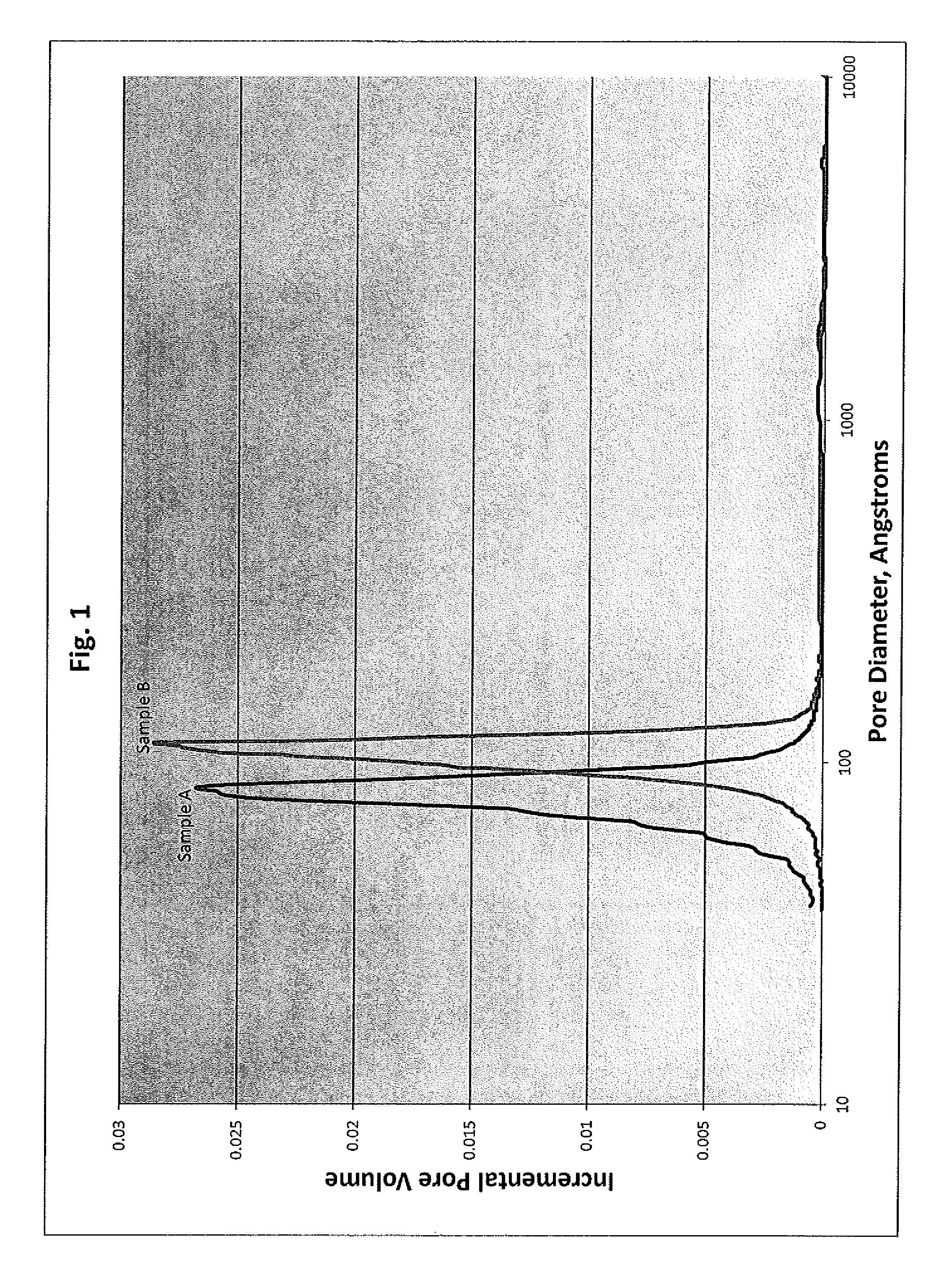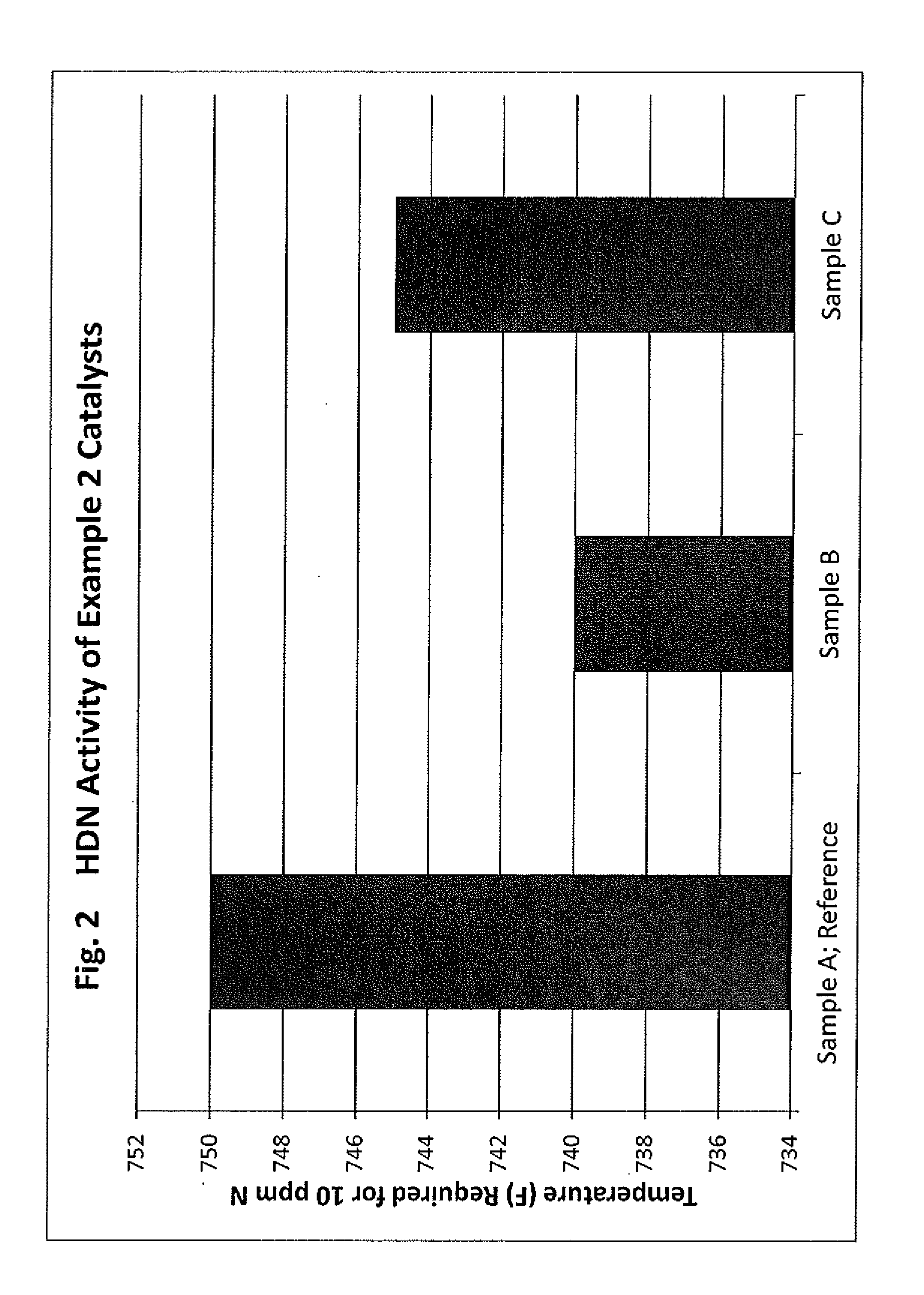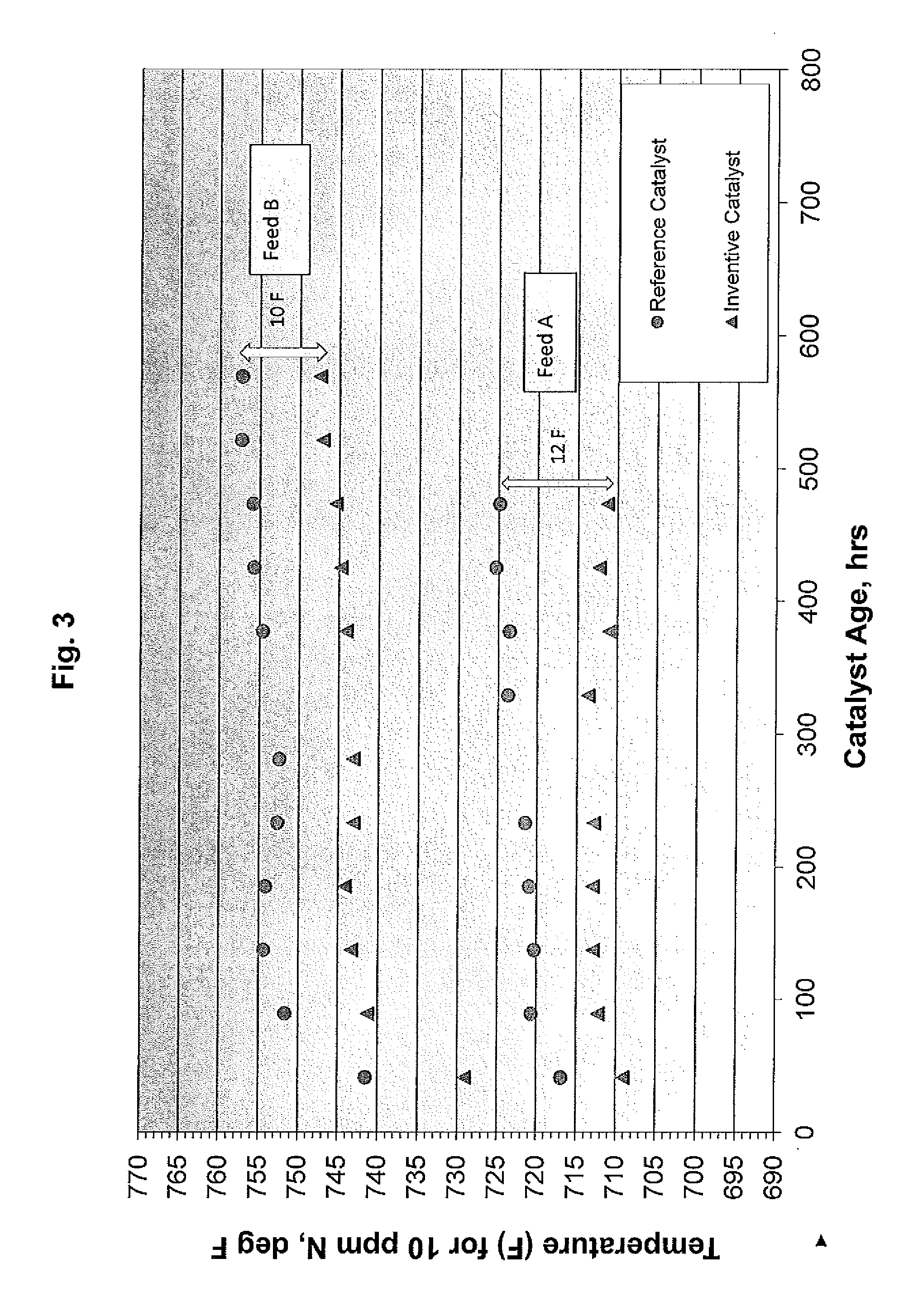Process and catalyst for the hydrotreatment of a heavy hydrocarbon feedstock
- Summary
- Abstract
- Description
- Claims
- Application Information
AI Technical Summary
Benefits of technology
Problems solved by technology
Method used
Image
Examples
example 1
[0087]Example 1 describes the preparation of the shaped alumina support particle used in the making of the final catalyst composition of the invention. The shaped alumina support particle was heat treated (calcined) at various temperatures to determine the effect that temperature has on the properties of the heat treated support used to make the final catalyst composition of the invention and upon the catalytic performance of the final catalyst composition of the invention.
[0088]The shaped support was prepared by mixing 3285 grams of pseudo-boehmite alumina powder with a loss on ignition (LOI) of 23.9% with 3418 g of water and 54 grams of nitric acid (69.4%) using a muller mixer. The components were mixed for a sufficient period of time to provide an extrudable paste. The resulting paste was extruded through 1.3 mm extrusion dies to form extrusion particles of the shaped support. The particles were dried in air at 127° C. for four hours to give the dried extrusion particles.
[0089]A ...
example 2
[0094]This example describes the preparation of catalyst compositions using the heat treated (calcined) samples described in Example 1. These catalyst compositions were used in the hydrotreating activity tests of Examples 3-4.
[0095]The catalyst compositions were prepared by impregnating the samples of Example 1 with a catalytic impregnation solution comprising a Group 6 metal component and a Group 10 metal component to thereby provide an impregnated alumina support. More specifically, the catalytic compositions were prepared by impregnating the samples of Example 1 with a catalytic impregnation solution followed by drying the impregnated samples and calcination of the dried impregnated samples. The impregnation solution was prepared by combining within a container vessel 33.1 grams of molybdenum trioxide (MoO3), 10.4 grams of nickel carbonate (NiCO3), 11.9 grams of 86% concentration phosphoric acid (H3PO4) and 100 grams of deionized water. The mixture was heated to 93° C. (200° F.) ...
example 3
[0097]Example 3 describes the experimental procedure used to measure the performance of catalyst compositions prepared as described in Examples 1 and 2 in the hydrotreating of a heavy vacuum gas oil (HVGO) used in hydrocracking. A laboratory stainless steel isothermal tube reactor was packed with 20 cc of the relevant catalyst and 51 cc of 70 mesh silicon carbide diluent. The catalyst was sulphided using a 5% H2S in H2 gas using a gas rate of 20 liters / hr.
[0098]The temperature was ramped from ambient to 204° C. (400° F.) at 10° C. / hr (50° F. / hr), held for 2 hours, ramped to 316° C. (600° F.) at the same rate, held for 2 hours, and then to 371° C. (700° F.) at the same rate and held for 1 hour. The temperature was then lowered to 93° C. (200° F.) and the test feed introduced under test conditions of 1700 psig outlet pressure (100% H2), 5500 standard cubic feet per barrel (SCFB) hydrogen rate and a liquid hourly space velocity (LHSV) of 1.5 hr-1.
[0099]The temperature was then ramped t...
PUM
| Property | Measurement | Unit |
|---|---|---|
| Temperature | aaaaa | aaaaa |
| Temperature | aaaaa | aaaaa |
| Fraction | aaaaa | aaaaa |
Abstract
Description
Claims
Application Information
 Login to View More
Login to View More - R&D
- Intellectual Property
- Life Sciences
- Materials
- Tech Scout
- Unparalleled Data Quality
- Higher Quality Content
- 60% Fewer Hallucinations
Browse by: Latest US Patents, China's latest patents, Technical Efficacy Thesaurus, Application Domain, Technology Topic, Popular Technical Reports.
© 2025 PatSnap. All rights reserved.Legal|Privacy policy|Modern Slavery Act Transparency Statement|Sitemap|About US| Contact US: help@patsnap.com



